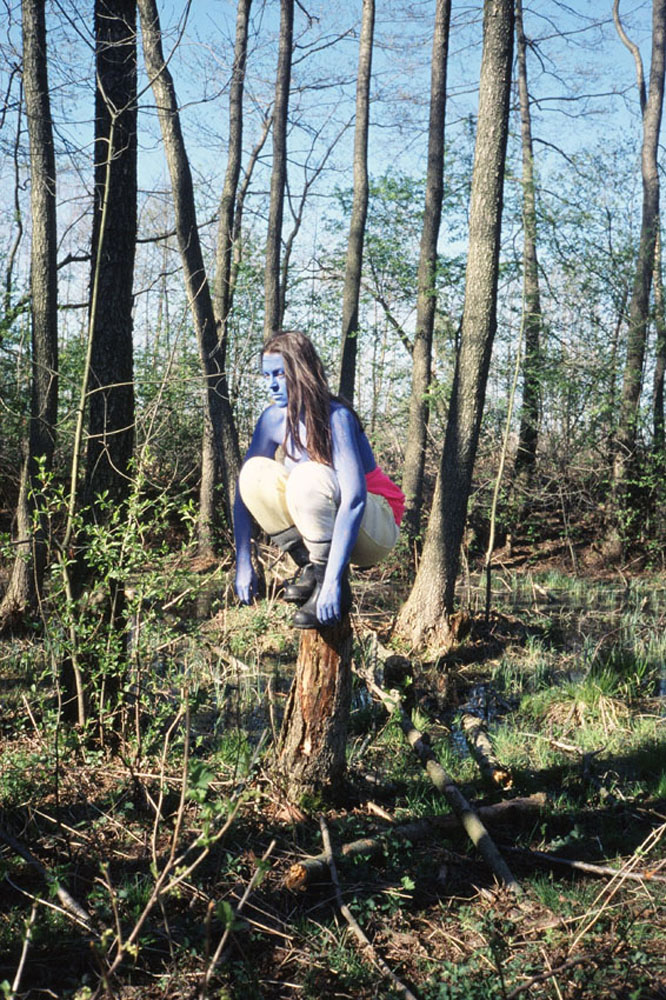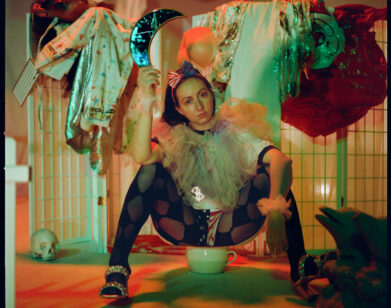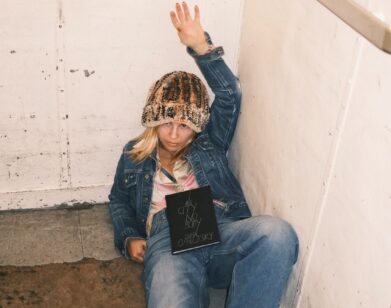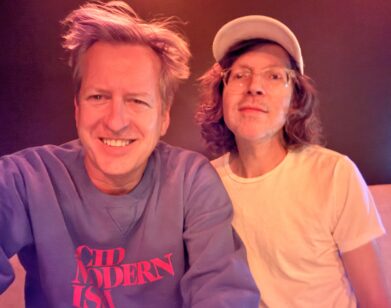Why is Gender Relevant?
Melanie Bonajo’s sculptures, photographs, performances, and publications offer a break—a suspended moment in digital time. The Berlin and Amsterdam-based artist, whose solo show, “One Question, Three Rooms, 44 Possible Answers” is on view through March 30 at New York’s P.P.O.W., makes work that employs a unique strain of raw immediacy; women hold handwritten cardboard signs to participate in performative events that seem unscripted and passionately reactionary.
Themes of gender, animal nature, household space, domesticity, and primitive attempts at forging a relation with an environment are all present in Bonajo’s work. In one portion of the gallery, the artist displays three panels of handwritten text on cardboard, propped against the wall. The text is a swirling array of existential questions, with queries such as, “Why is gender relevant?” and “Is faith an efficient parasite?” In another section, the Bonajo displays a photograph of a woman, lying naked on a kitchen counter, above an open mini-refrigerator, her body covered in clay and stuck with lit birthday candles—at once referencing a familiar domestic scene and a certain symbolic ritualism. “The border between private and public interests me.” Bonajo says. “Especially how we define our comfort zone. What are contemporary territories of intimacy?”
The artist is concerned with the changing boundaries of comfort and relaxation in a world where technology is increasingly prevalent and all-encompassing. Grouped together in the gallery are several printed and digitally manipulated photographs of animals, mounted on triangular wooden structures and supported by clay bases. The animals appear to glow and emit light that at once appears naturally occurring and artificial. “Digital communication excludes connections with other planetary beings,” Bonajo says.
Bonajo’s background as an artist has contributed to her thoughts on the display and distribution of her work. “I have not been busy with any kind of gallery art world for a long time,” she says. “I was more active in anarchist underground systems.” This has led to work that is displayed and processed differently; in a way that is not entirely dependent on a classic art-world mode of operation. Bonajo has published several low-cost, high-edition publications as venues for her photography and performance documentation, and many of her texts are available on her website. “The white cube is not an essential platform for me,” she says. “It might as well be a black box, a website, a kitchen closet or a forest. I am interested in processes, in energy. The object is never the final destination.”







